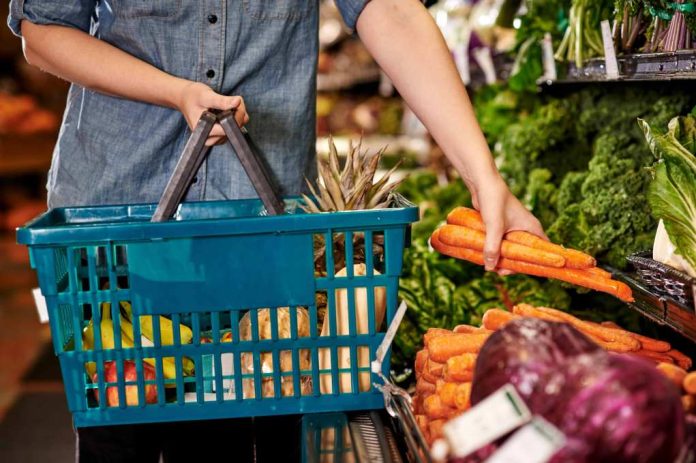
In times of financial difficulty, accessing nutritious food can be a challenge.
That’s where the Supplemental Nutrition Assistance Program (SNAP) steps in.
It’s a program designed to assist those who find it tough to afford their grocery bills.
With SNAP, families and individuals receive a helping hand to ensure they can put wholesome food on the table.
This guide dives into the essentials of SNAP, from the role of EBT cards in making purchases to understanding eligibility and the application process.
It’s a resource for anyone needing guidance on navigating this crucial program, ensuring that financial constraints don’t stand in the way of healthy eating.
Understanding SNAP: A Lifeline for Households in Need
The Supplemental Nutrition Assistance Program (SNAP) is a key help for many low-income people and families.
It helps them buy healthy food.
SNAP gives money to those who struggle financially to meet their basic food needs.
This program is more than just fighting hunger.
It’s about improving public health and wellness.
By helping people get the right nutrition, SNAP builds stronger communities.
It leads to better health and more success in education for those with less money.
The Role of EBT Cards in SNAP
For many families with money problems, Electronic Benefit Transfer (EBT) cards are a big help.
They make it easier to get healthy food. These cards work like debit cards.
They are for buying food with the Supplemental Nutrition Assistance Program (SNAP).
After a family qualifies, they get money in an account every month.
They use the EBT card to access this money.
People can shop with their EBT card at certain stores.
They just swipe the card and enter a PIN.
This way of shopping is quick and keeps users’ information private.
It also lets families choose the food they like.
This means they don’t have to give up on getting the food they prefer.
Where Can You Use Your EBT Card?
It’s pretty easy to find places that take EBT cards.
Most grocery stores, big supermarkets, and even some farmers’ markets accept them.
Not just regular stores, but some online shops too.
They let you use EBT cards to buy things.
This means you can get fresh and healthy food delivered right to your home.
Who Can Receive SNAP Benefits?
To see if you can get SNAP benefits, there are a few key things to check.
Your income is really important.
SNAP is for people with not much money, so there are rules about how much you can earn.
What you own also counts.
Things like money in the bank or stocks shouldn’t be too much.
But usually, your house or car won’t count against you.
Your job situation matters too.
If you can work, you should be working or looking for a job.
This might not apply if you’re older, have a disability, or in special cases.
You also need to live in the U.S. legally to qualify.
Finally, who you live with effects if you can get SNAP.
A ‘household’ for SNAP includes everyone who lives and eats together.
This means roommates might count if you share meals.
Applying for SNAP Benefits
To start getting SNAP benefits, you first need to apply.
You can do this online, by mail, or in person at a local SNAP office.
Each state has its own form and way to apply.
Once you apply, you’ll have an interview.
This can be on the phone or in person in most states.
The interview checks if you qualify by looking at your income, spending, and other things.
It helps to have your documents ready.
You’ll often need things like an ID (like a driver’s license), proof of where you live (like a utility bill), income details, and info about any assets like bank accounts.
Remember, each state might have different rules for what documents you need or how they do interviews.
So, it’s good to check your state’s specific requirements.
How Much Can You Get?
Like we said earlier – factors like the amount of people in your household will impact eligibility.
However, it also impacts the amount that a household can receive every month.
For example, if you’re alone, you can get up to $291 a month.
A family of four can get up to $973.
The more people you have, the more money you can get.
For each extra person after 8 people (which has a max of $1,751), you get another $219.
But remember, these amounts are for 48 states in the U.S., and Washington D.C. In Alaska, Hawaii, Guam, and the U.S. Virgin Islands, the amounts are different.
So, it’s important to check the specific rules for where you live.
Bottom Line
Overall the Supplemental Nutrition Assistance Program (SNAP) stands as a vital support for those facing tough financial times.
This program ensures that financial difficulties don’t prevent access to nutritious food.
With SNAP, eligible individuals and families receive assistance to make healthy eating choices more affordable.
From understanding how to use EBT cards for purchases to navigating the application and eligibility process, this guide provides essential information for anyone in need of this support.
SNAP is more than just a program for food assistance; it’s a step towards healthier communities and a testament to the power of providing a helping hand.
Remember, each state has its own guidelines, so it’s important to stay informed about the specific requirements in your area.
With SNAP, a path to better nutrition and overall well-being becomes accessible to all who need it.




























